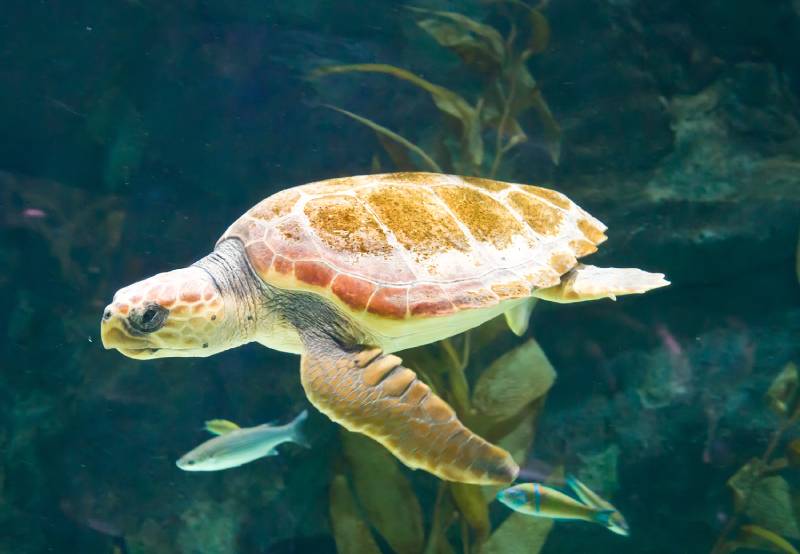Turtle & Tortoise Shells Explained: Functionality, Differences, & FAQ

Updated on
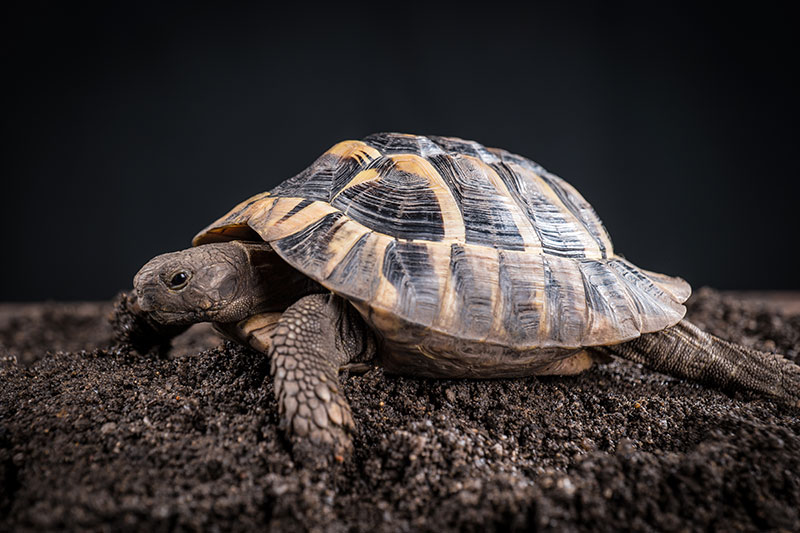
Click to Skip Ahead
Turtles and tortoises are a fascinating part of the natural world, playing important roles in many ecological systems. A unique aspect of these creatures is their shells, which are more than just a sturdy shield – they are a crucial part of their anatomy and play a vital role in their survival. This guide delves into the complex world of turtle and tortoise shells, exploring their structure, function, and the threats they face from human activities.
Composition of Turtle and Tortoise Shells
Turtle and tortoise shells are fascinating structures that have captured the attention of scientists and nature enthusiasts alike. Each shell is composed of an upper section known as the carapace and a lower section referred to as the plastron. These sections are not just hollow casings; they’re intricately structured, living parts of the animal’s body. These two sections are covered by a layer of hardened plates called scutes, made from keratin – the same protein found in human hair and nails. The scutes act as a shield, protecting the bony structure underneath from damage. Internally, the shell houses a unique type of bone that grows with the turtle or tortoise, creating a sturdy framework that supports the creature’s internal organs.

Multipurpose Functionality of the Shell
The shell of a turtle or tortoise serves several vital functions. Most obviously, it acts as a protective barrier against potential predators, offering the creature a safe retreat when threatened. But the shell’s role extends beyond defense. It is an integral part of the creature’s skeletal system, providing essential support for its internal organs. Additionally, the shell plays a significant role in thermoregulation, helping the turtle or tortoise regulate its body temperature. This function is critical for survival, enabling these creatures to thrive in a wide range of climates.
Diversity of Shells Across Different Species
The diversity of turtle and tortoise shells across different species is truly astounding. From the vibrant markings of the Painted Turtle to the weighty shell of the African Spurred Tortoise, each shell tells a story about the species it belongs to. The shell’s design – its shape, size, color, and even texture – varies from one species to another. These differences are not random; they are the product of millions of years of evolution, shaped by the specific lifestyle and environmental needs of each species.
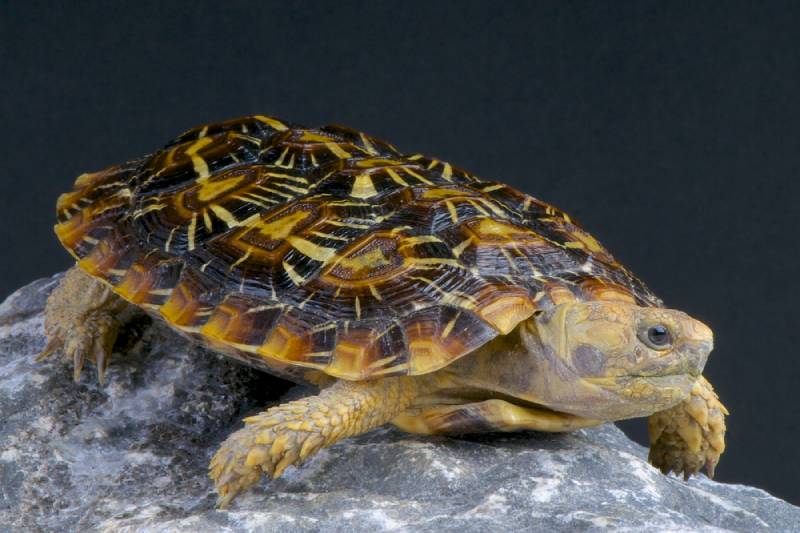
The Importance of Shell Health and Maintenance
The health of a turtle or tortoise’s shell is inextricably linked to its overall well-being. A damaged or diseased shell can lead to severe health problems, affecting not only the creature’s mobility but also its ability to eat, breathe, and reproduce. Therefore, keeping a turtle or tortoise shell healthy is crucial to the animal’s survival.
Threat of Shell Diseases
Shell diseases, such as shell rot and metabolic bone disease, can have devastating effects on turtles and tortoises. These conditions, often resulting from poor diet, lack of UV light, or unclean environments, can cause painful lesions, abnormal growth, and in severe cases, can be fatal.
What Does Shell Disease Look Like?
Shell diseases can manifest in a variety of ways, from discolored scutes to dull or chipped shells. In advanced cases, the shell may be covered with lesions that bleed and emit a foul odor. Shell rot is characterized by soft, mushy patches on the scutes that are often accompanied by flaking or sloughing of the skin around them.
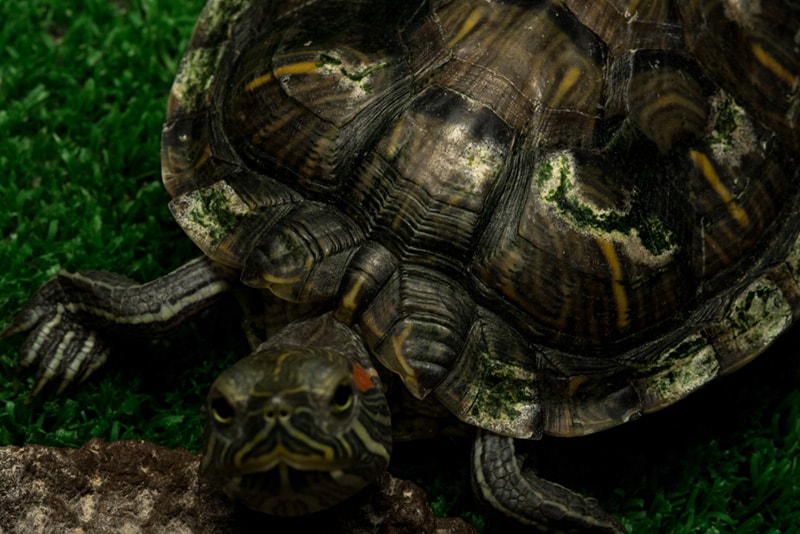
Common Shell Problems and Their Causes & Solutions
Hypovitaminosis A
This condition is caused by a deficiency of vitamin A in the turtle or tortoise’s diet and can lead to eye infections, skin lesions, and softening of the scutes. The solution is to provide adequate amounts of vitamin A through supplementation or feeding foods that are rich in it (such as carrots).
Metabolic Bone Disease
This is a severe disorder caused by an imbalance of dietary calcium and phosphorus that can lead to bone deformities and death. The solution is to ensure the turtle or tortoise has access to a balanced diet with adequate amounts of these minerals, as well as exposure to UV light.
Shell Rot
This condition is caused by bacteria or fungi, often resulting from poor diet, lack of UV light, or unclean environments. The solution is to keep the turtle’s habitat clean and ensure it has access to a balanced diet as well as adequate UV light exposure.

Key Aspects of Maintaining Shell Health
To maintain a healthy shell, certain factors are of utmost importance. These include providing a balanced diet rich in calcium and vitamin D, ensuring adequate exposure to UV light, and maintaining a clean, stress-free environment. All these factors contribute to the strength and integrity of the shell.
The Role of Regular Veterinary Check-ups
Regular veterinary check-ups are also vital for maintaining shell health. A veterinarian specializing in reptiles can detect early signs of shell disease and provide appropriate treatment, thereby preventing further deterioration and potentially saving the animal’s life.

Human Effects on Shell Health
Human activities have a significant impact on the health and integrity of turtle and tortoise shells. Pollution, habitat destruction, and the illegal pet trade are just some of the factors that can lead to shell damage. Exposure to harmful chemicals, physical trauma, and stress from being kept in unsuitable conditions can all take a toll on a shell’s health.
The Importance of Conservation Efforts
Given the threats posed by human activities, conservation efforts aimed at protecting these unique animals and their remarkable shells are more important than ever. These include legal protections, habitat preservation initiatives, and public education campaigns to raise awareness about the importance of turtles and tortoises and the challenges they face. By taking action to conserve these creatures, we can help ensure that future generations will continue to marvel at the incredible structure of turtle and tortoise shells.
Other FAQs About Turtle and Tortoise Shells
Are turtle and tortoise shells sensitive to touch?
Yes, turtle and tortoise shells are sensitive to touch. They have nerve endings that allow the animal to feel pressure and pain.
Can turtles and tortoises feel pain in their shells?
Yes, turtles and tortoises can feel pain in their shells. The shell is part of their skeletal system and has nerve endings, making it sensitive to injury.
Do all turtles and tortoises have the same number of scutes on their shells?
No, the number of scutes varies among different species of turtles and tortoises. However, many species have 13 scutes on the carapace and 12 on the plastron.
Can a turtle or tortoise survive without its shell?
No, a turtle or tortoise cannot survive without its shell. The shell is an integral part of the creature’s body, providing protection and support for its internal organs. Turtles and tortoises can repair minor shell damage over time. However, significant injuries often require veterinary intervention.
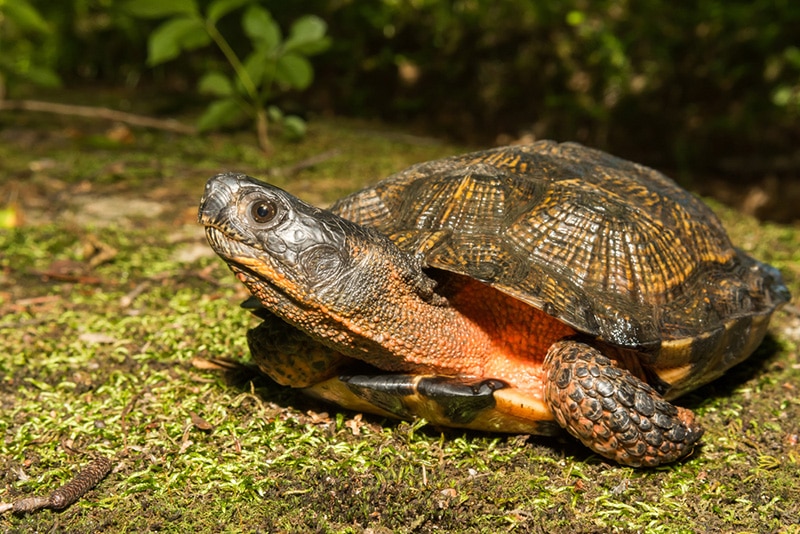
How can you tell the age of a turtle or tortoise from its shell?
It’s a common misconception that you can accurately determine a turtle or tortoise’s age from its shell. However, as turtles and tortoises grow, their shells grow with them. The bones in the shell produce new cells at the edges, allowing the shell to expand. So, larger turtles of a particular species are older than smaller ones. It’s important to remember that while older individuals may have more wear and tear on their shells, factors like diet and habitat can also affect shell condition.
Why do some turtles and tortoises have domed shells while others have flat shells?
The shape of a turtle or tortoise’s shell is largely determined by its habitat and lifestyle. Species that live in water often have flatter shells that help them swim and dive, while land-dwelling species typically have domed shells that offer better protection from predators.
Is it safe to handle a turtle or tortoise by its shell?
While it’s generally safe to gently handle turtles and tortoises, it’s important to avoid putting pressure on the shell, which can cause discomfort or injury. Always support the animal’s weight with both hands, one under the carapace and one under the plastron.
What should I do if I find a turtle or tortoise with a damaged shell?
If you find a turtle or tortoise with a damaged shell, it’s important to contact a wildlife rehabilitator or a vet experienced in treating reptiles. Never attempt to repair a shell yourself, as this can cause further harm.
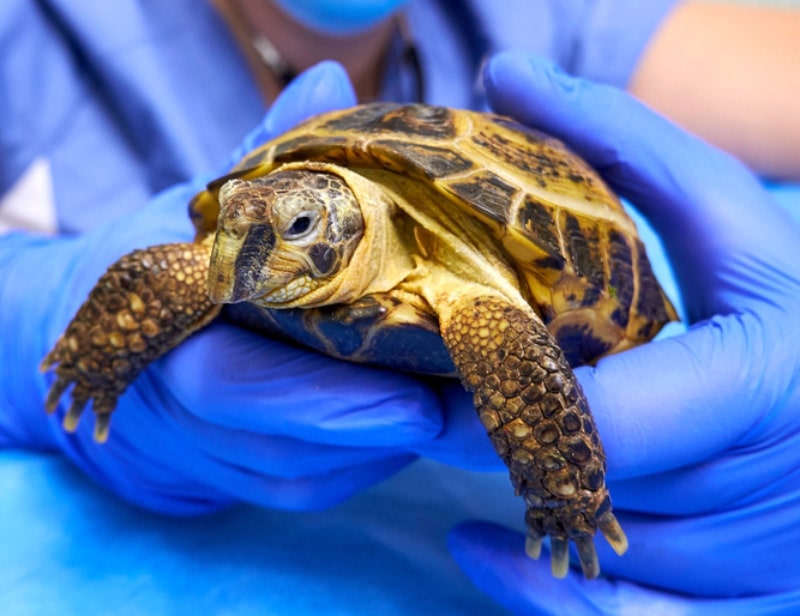
Fun and Interesting Facts About Turtle and Tortoise Shells:
- The oldest known fossil turtle had a shell that measured over 60 cm long.
- Turtles and tortoises can use their shells to store moisture and help regulate their body temperature.
- Some species of turtles and tortoises have distinctive patterns on their shells, while others have smooth shells without any pattern at all.
- Shells can be light or dark in color, depending on the species.
- The shells of some species of turtles and tortoises can be incredibly thick – up to 20 cm!
- Turtles and tortoises can make different sounds by vibrating the muscles in their shells.
- The shape of a turtle or tortoise’s shell is determined by its genes, not its environment.
- Turtles and tortoises have been around for more than 200 million years. They are one of the oldest living species on earth!
Conclusion
The turtle or tortoise shell is a testament to nature’s ingenuity – a multifunctional structure that is central to the creature’s survival. As we learn more about these magnificent creatures and the threats they face, it becomes clear that we play a significant role in ensuring their survival. It is our responsibility to preserve these unique creatures and the environments they inhabit for future generations to appreciate and learn from.
Featured Image Credit: Ketta, Shutterstock

